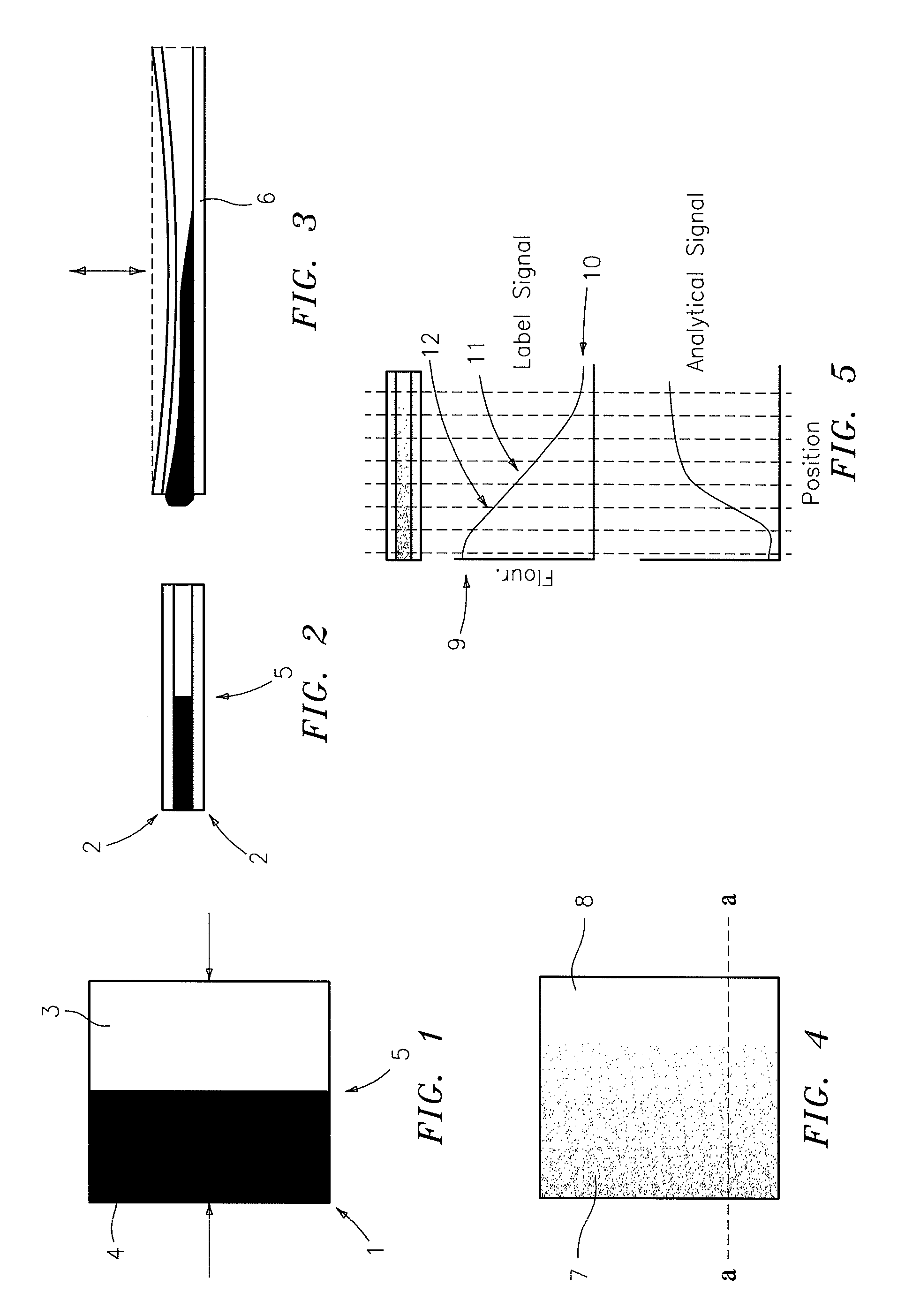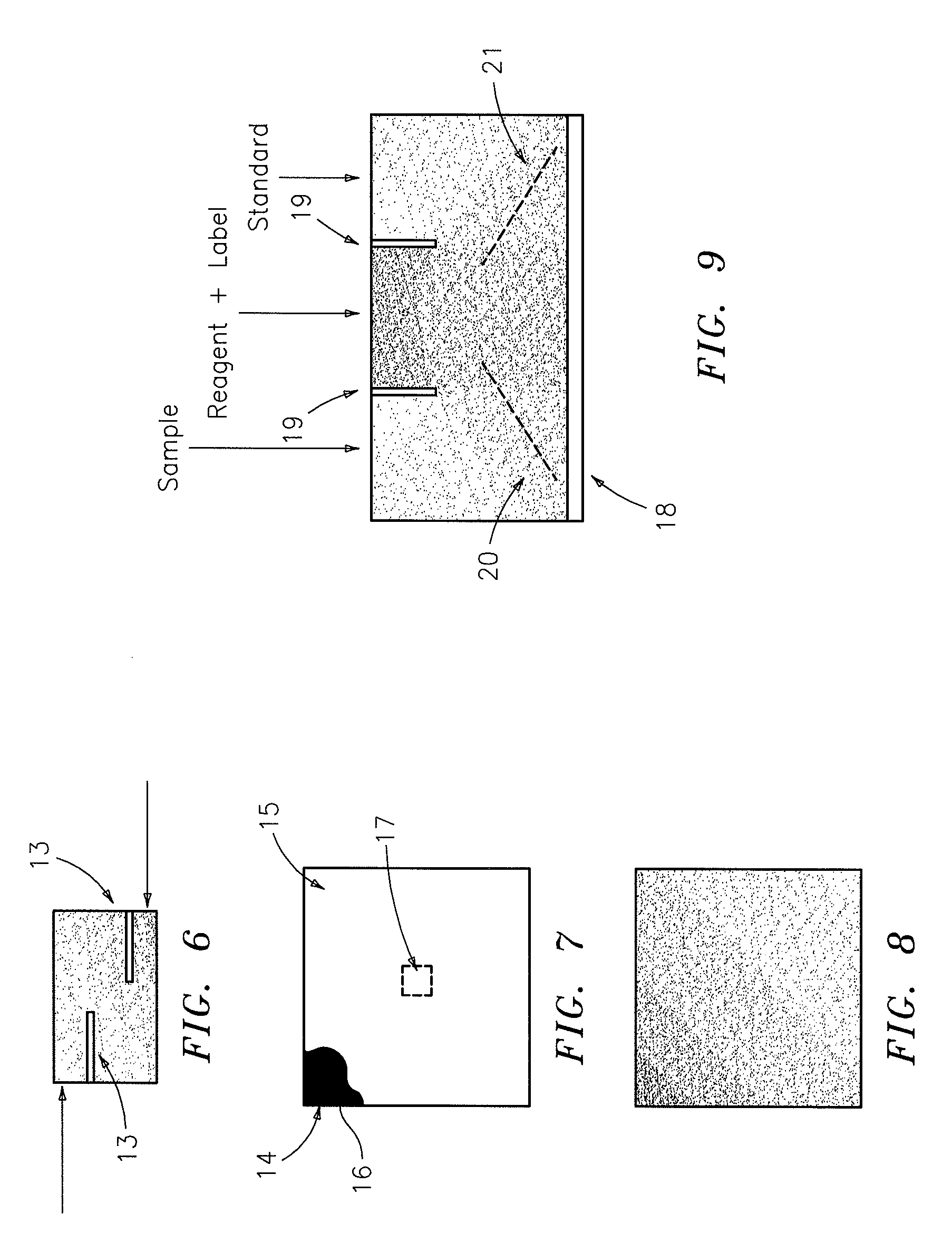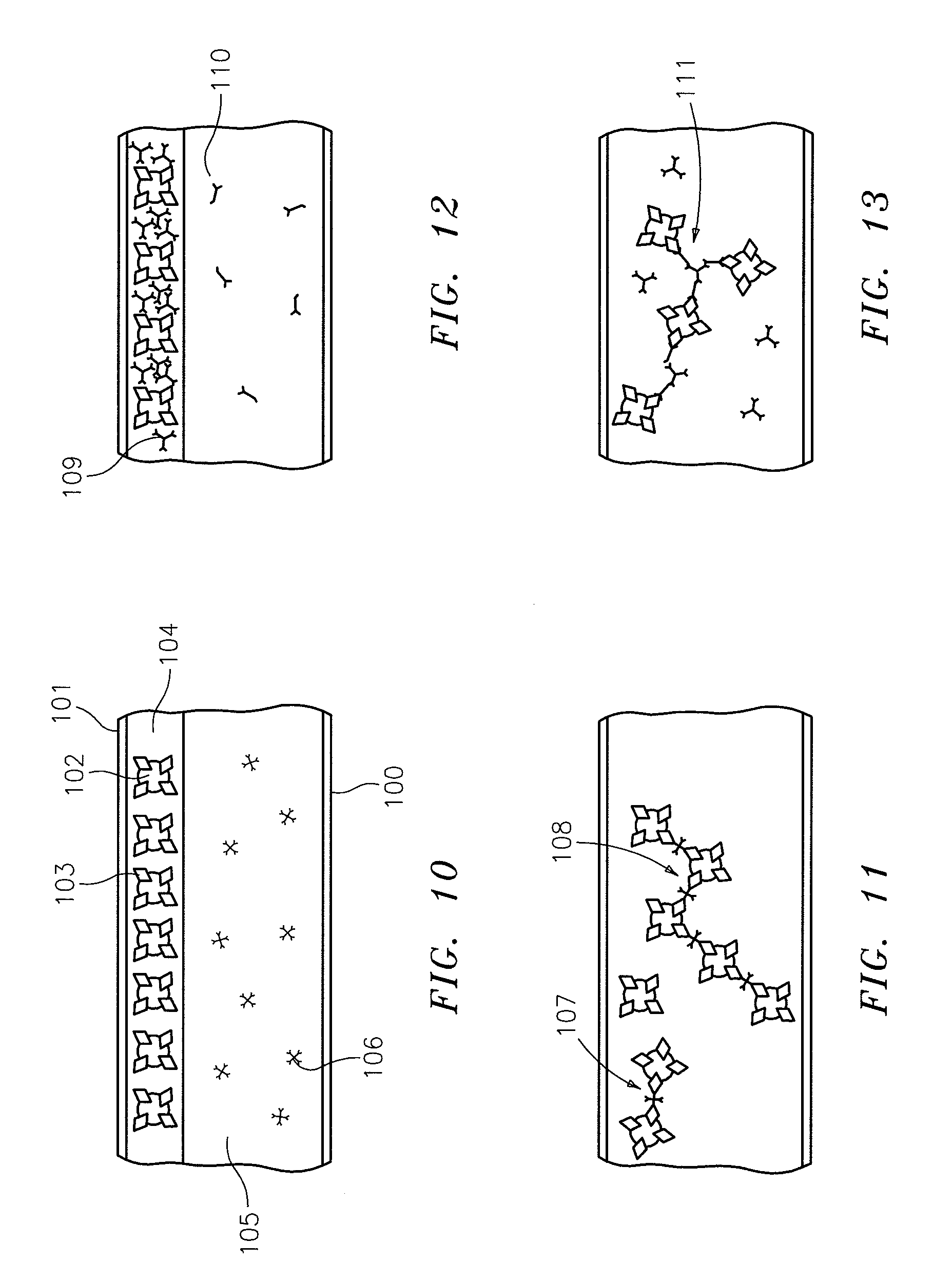Method for serologic agglutination and other immunoassays performed in a thin film fluid sample
a technology of immunoassay and liquid sample, which is applied in the field of method and system for performing serological agglutination assay in liquid sample, can solve the problems of increasing the complexity of automated instrumentation, requiring careful calibration, and causing patient death
- Summary
- Abstract
- Description
- Claims
- Application Information
AI Technical Summary
Benefits of technology
Problems solved by technology
Method used
Image
Examples
Embodiment Construction
[0027]FIG. 1 is a schematic top view of a chamber 1, in this instance a square, whose cross-section is shown in FIG. 2. The chamber is comprised of relatively thin top and bottom plates, at least one of which must be transparent. Into the chamber are introduced two or more liquids, one being the sample 3 to be analyzed and the other being the reagent 4 required for the analysis. At least one of these liquids has a dissolved marker which may be fluorescent, such as fluorescence, or an absorbent dye, such as phenol red, or the like. The marker must be such that it does not chemically interfere with the desired analytical signal nor should the marker signal be affected by any signal or reaction products of the analysis in a manner, which cannot be compensated for.
[0028]In the instance shown, liquid 4 is the analyzing reagent which contains a fluorescent marker, and liquid 3 is the sample to be analyzed. If the liquids are introduced into the chamber in equal amounts, in the directions ...
PUM
 Login to View More
Login to View More Abstract
Description
Claims
Application Information
 Login to View More
Login to View More - R&D
- Intellectual Property
- Life Sciences
- Materials
- Tech Scout
- Unparalleled Data Quality
- Higher Quality Content
- 60% Fewer Hallucinations
Browse by: Latest US Patents, China's latest patents, Technical Efficacy Thesaurus, Application Domain, Technology Topic, Popular Technical Reports.
© 2025 PatSnap. All rights reserved.Legal|Privacy policy|Modern Slavery Act Transparency Statement|Sitemap|About US| Contact US: help@patsnap.com



